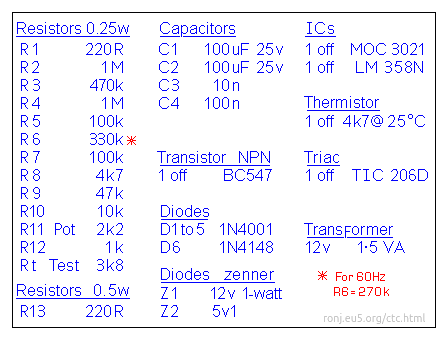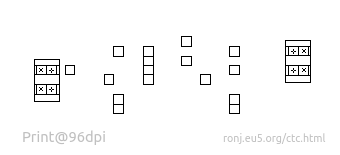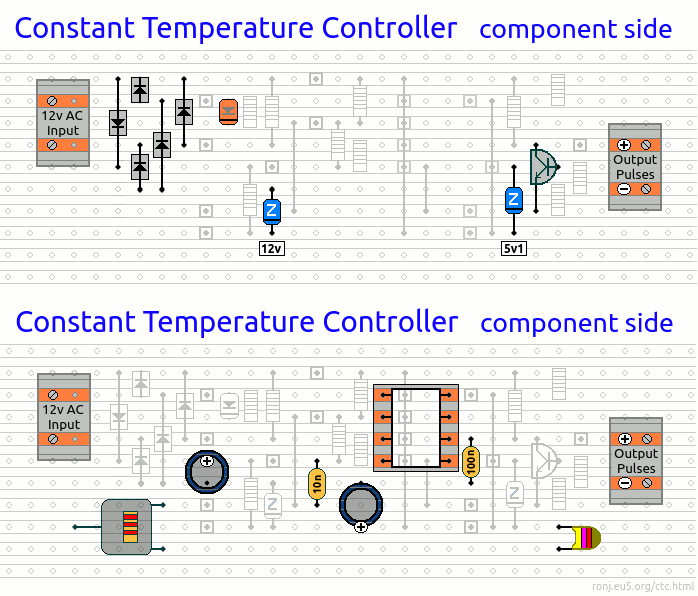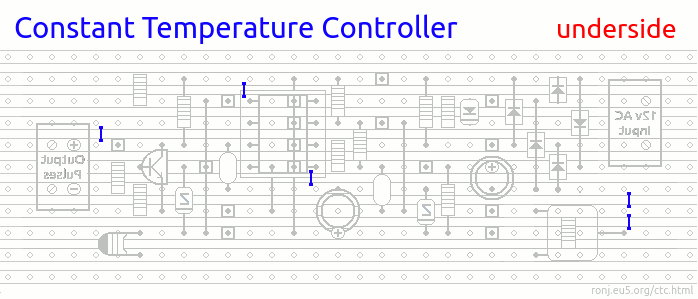Parts List

Construction Notes
Click here if you're new to constructing stripboard projects.
The terminals are a good set of reference points. To fit them - you may need to enlarge the holes slightly. Then turn the board over and use a felt-tip pen to mark the 16 places where the tracks are to be cut. Before you cut the tracks, use the "actual size" drawing to
Check That The Pattern is Correctly Marked .
Actual Size

When you're satisfied that the pattern is right - cut the tracks. Make sure that the copper is cut all the way through. Sometimes a small strand of copper remains at the side of the cut and this will cause malfunction. Use a magnifying glass - and backlight the board. It only takes the smallest strand of copper to cause a problem. If you don't have the proper track-cutting tool - a 6 to 8 mm drill-bit will do. Just use the drill-bit as a hand tool - there's no need for a drilling machine.

Next make and fit the
Four Wire Links. I used bare copper wire on the component side of the board. Telephone cable is suitable - the single stranded variety used indoors to wire telephone sockets. Stretching the core slightly will straighten it - and also allow the insulation to slip off.
Then fit the 10 resistors. They are all shown lying flat on the board. However, those connected between close or adjacent tracks are mounted standing upright.
The next stage is to fit the transistor and the 8 diodes. Pay particular attention to the orientation of the diodes. Again - diodes connected between close or adjacent tracks are mounted standing upright. Note that the zener next to the transistor is the 5v1.

Next - fit the potentiometer, the 4 capacitors and the IC socket. Using a socket reduces the risk of damage to the IC - and makes it easier to replace. Pay particular attention to the orientation of the electrolytic capacitors.
I've drawn the thermistor on the board - but it's really just to show the connection point. It will actually be connected to the board by a couple of wires. Alarm cable is suitable. Choose the length of cable you need - and solder one end to the board. There's no need to attach the thermistor yet.
Then examine the underside of the board carefully - to make sure that there are no unwanted solder links or other connections between the tracks. If you backlight the board during the examination - it makes potential problem areas easier to spot.
When you're satisfied that everything is in order - add the 5 solder links to the underside of the board. These are just small blobs of solder. I've used them to connect adjacent track. They are a simple and convenient alternative to wire links.

Finish off by inserting the LM358N into the socket. make sure that Pin 1 of the IC is in the top left-hand corner. And check that all 8 pins have entered the socket. Sometimes - instead of entering the socket - a pin will curl up under the IC.
You Are Now Ready To Test Your Circuit








